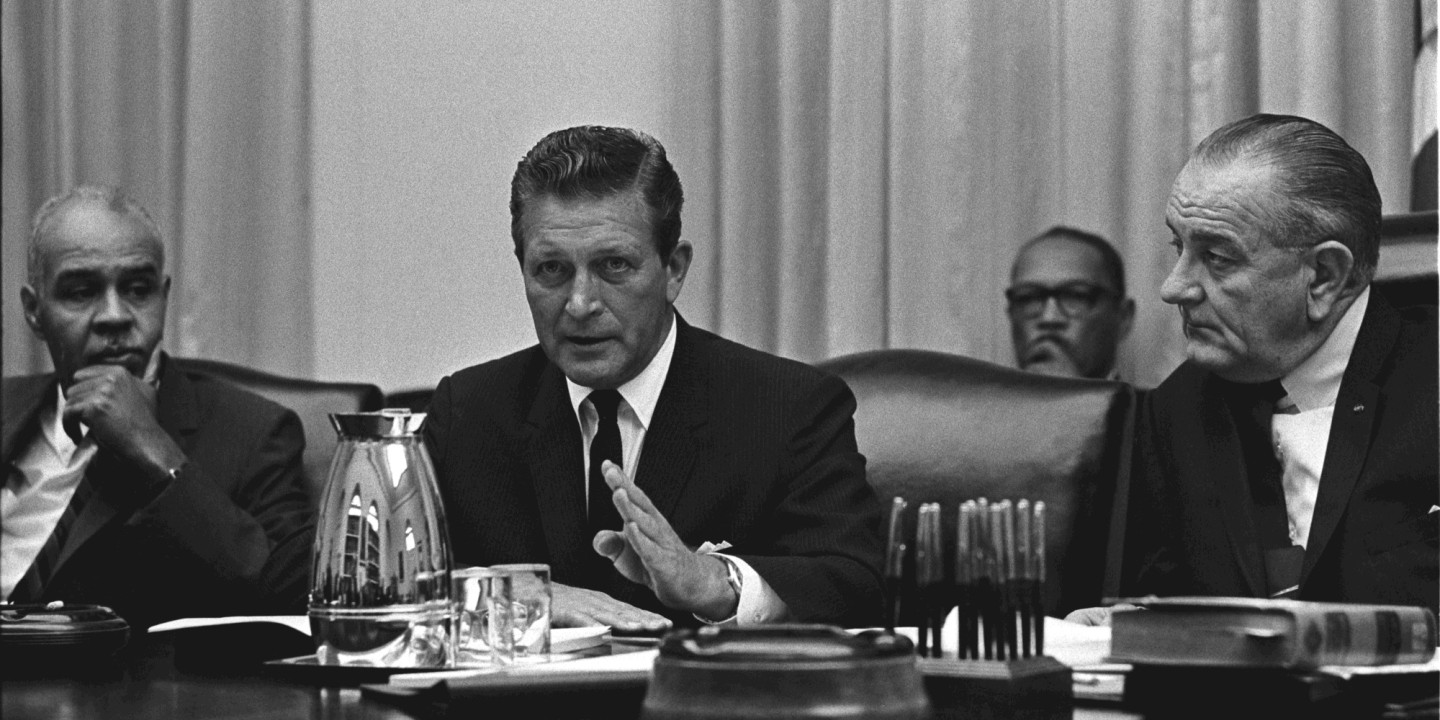Half a century after the Kerner report, Americans are still separate and unequal
The problem isn't that government efforts to address inequality don't work. It's that they were only haltingly tried.

Just weeks before the assassination of Martin Luther King Jr. 50 years ago this month, a presidential commission issued a searing account of the nation’s racial divide. The Kerner Commission, appointed by President Johnson (and named after its chair, Illinois governor Otto Kerner), had been charged with explaining the racial unrest of the previous summer. It returned a blunt diagnosis: the nation was in effect “two societies, one black, one white—separate and unequal.” And it was white practices of discrimination and segregation that had created the divide. “White institutions created it, white institutions maintain it, and white society condones it.” The commission recommended extensive federal action and spending to reduce discrimination and the accompanying disparities in income, education, employment, and economic opportunity.
This year’s anniversary of the Kerner report has spotlighted a sobering fact: by some measures the divide between black Americans and white Americans is as great now as in 1968, and in some cases even greater. Black people continue to be unemployed at roughly twice the rate of whites. Rates of black home ownership have barely changed, and the income gap between the races is about the same. The percentage of African Americans in prison has tripled since 1968.
Read our latest issue or browse back issues.
Areas of progress can be noted, especially in education and among those at the top of the economic ladder. African Americans have made gains in career opportunities and political participation, symbolized by the election of a black president (on the complex meanings of the Obama presidency, see the review of Ta-Nehisi Coates’s We Were Eight Years in Power). Nevertheless, the Kerner report’s judgment on a nation divided into two sectors, “separate and unequal,” could be rendered again in remarkably similar terms.
What are we to make of this lack of progress? Many Americans would see it as confirmation that government efforts to address inequalities don’t work. The historically more accurate answer is that government interventions were only haltingly tried—and that nevertheless much of what was tried worked pretty well.
The Kerner report came out when President Johnson’s Great Society programs were in full bloom. The commission had a firm idea on how to spread wealth and opportunity: invest in education, health care, job training, housing, and income support. There is plenty of evidence that programs begun in that era, flawed as some were, made a huge difference for black Americans—and white ones too. Poverty rate for both groups fell sharply throughout the 1960s.
But by 1968 the dominant political narrative was already trending in a different direction. Over the ensuing decades, political leaders deliberately backed away from the programs that helped reduce inequalities in health, education, and economic opportunity.
Fred Harris, the lone surviving member of the Kerner Commission, recalls that he and his colleagues operated with a simple assumption: “Everyone does better when everyone does better.” Since then, that axiom has not been tried and found wanting; it has been found politically unpopular and left untried.
A version of this article appears in the print edition under the title “Still separate and unequal.”






